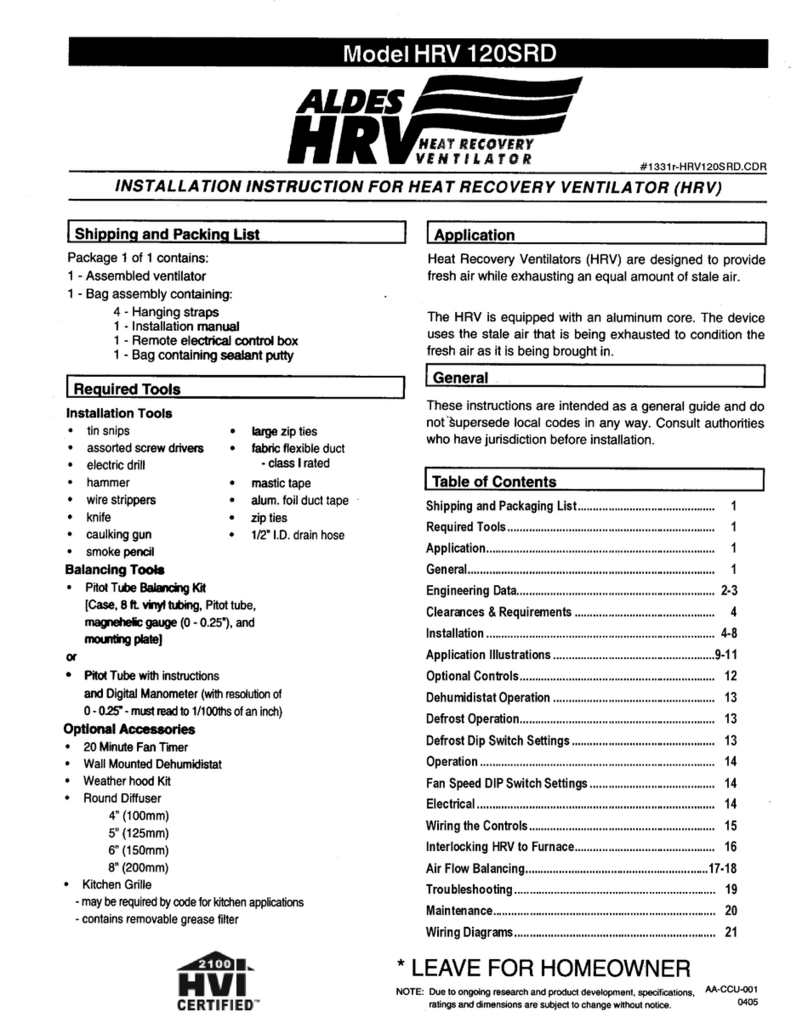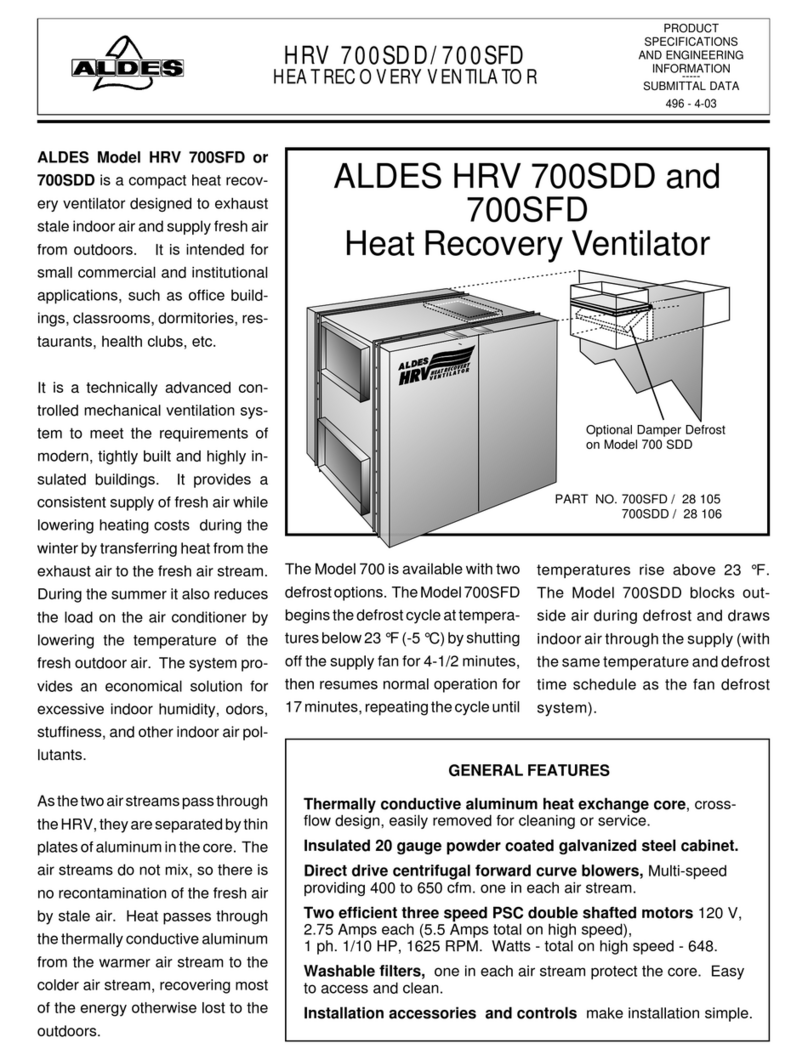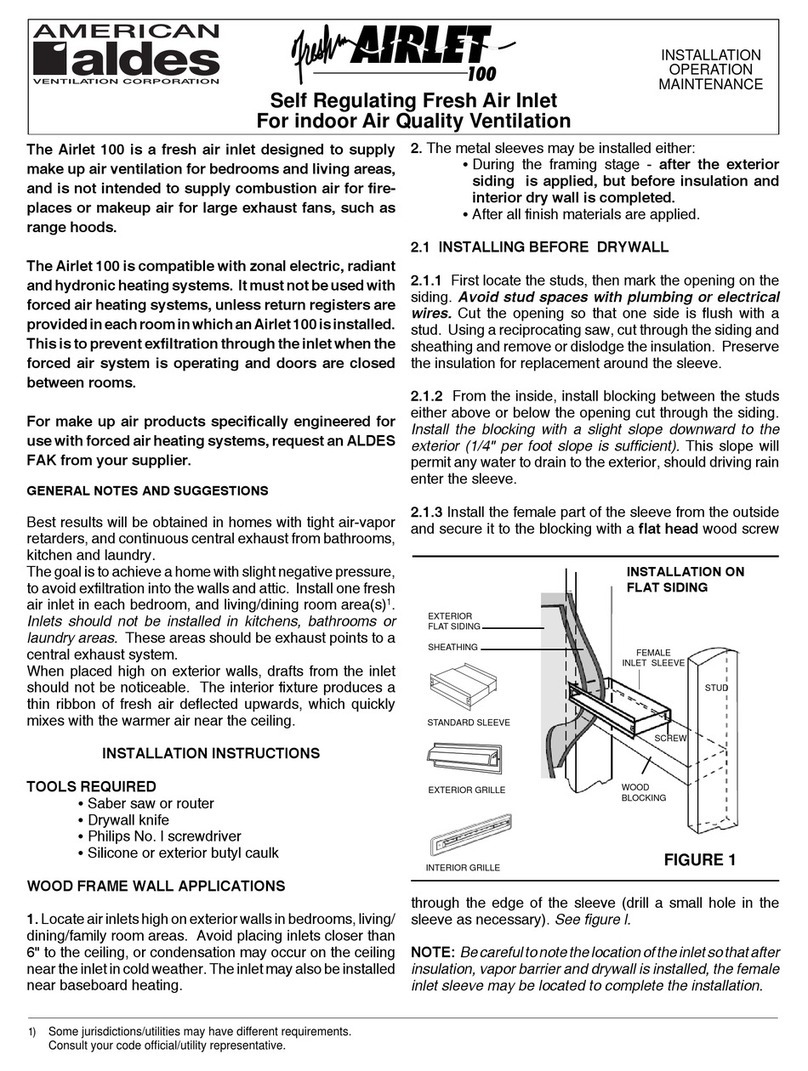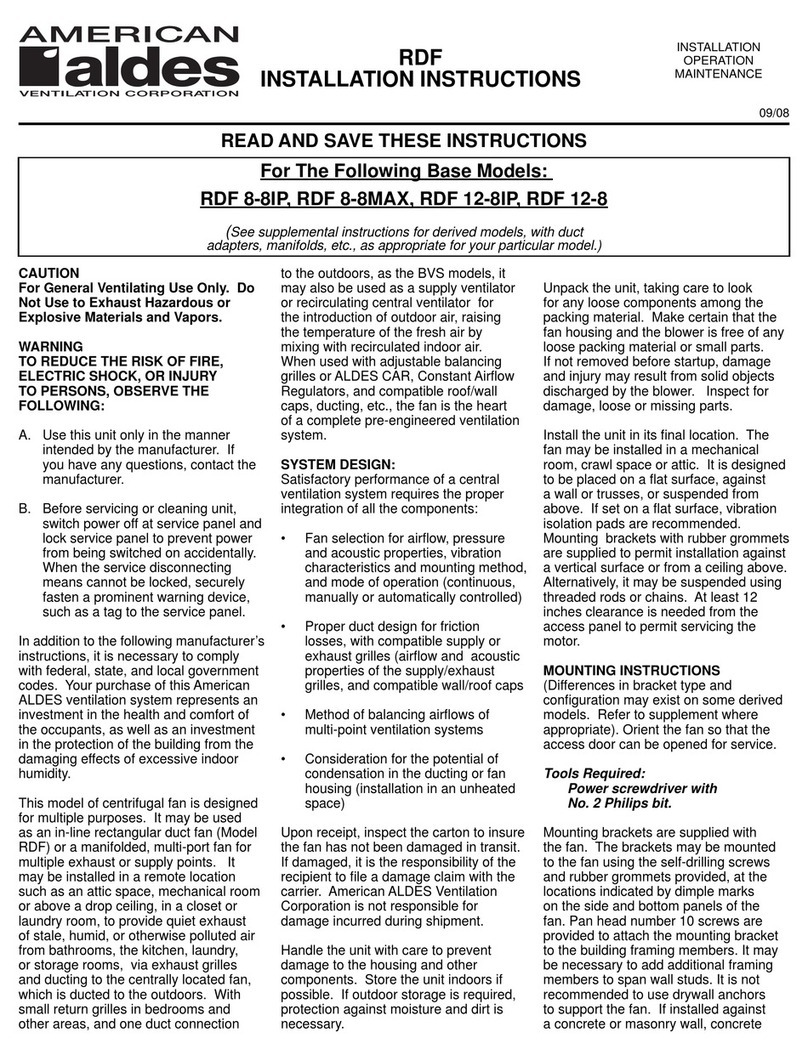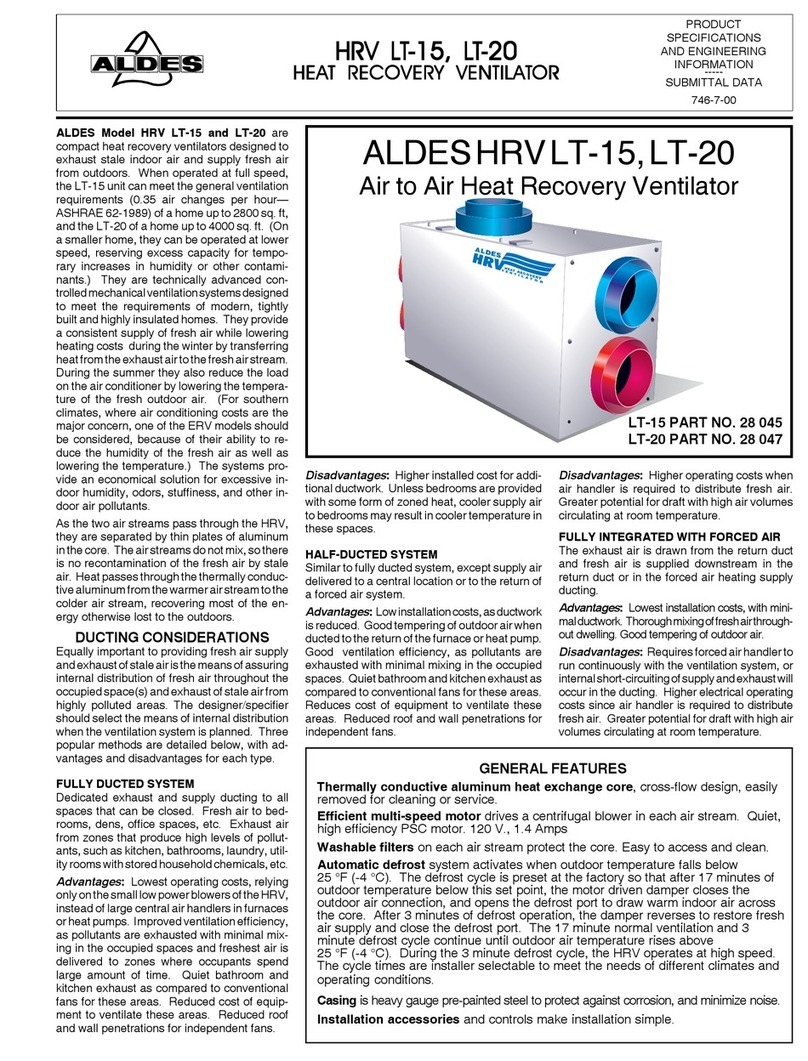
INSTALLATION
OPERATION
MAINTENANCE
Self Regulating Fresh Air Inlet
For Indoor Air Quality Ventilation
* Some jurisdictions/utilities may have different requirements. Consult your code official/utility representative.
TheAirlet200isafreshairinletdesignedtosupply
make up air ventilation for bedrooms and living
areas, and is not intended to supply combustion
air for fireplaces or large exhaust fans, such as
range hoods.
The Airlet 200 is compatible with zonal electric,
radiant and hydronic heating systems. It must not
be used with forced air heating systems, unless
return registers are provided in each room in
which an Airlet 200 is installed. This is to prevent
exfiltration through the inlet when the forced air
systemisoperating anddoorsareclosedbetween
rooms.
For make up air products specifically engineered
for use with forced air heating systems, request
an ALDES FAK from your supplier.
General Notes and Suggestions
Best results will be obtained in homes with tight air-
vapor retarders, and continuous central exhaust from
bathrooms, kitchen and laundry.
The goal is to achieve a home with slight negative
pressure, to avoid exfiltration into the walls and attic.
Install one fresh air inlet in each bedroom, and living/
dining room area(s). Inlets should not be installed
in kitchens, bathrooms or laundry areas. These
areas should be exhaust points to a central exhaust
system.
When placed high on exterior walls, drafts from the
inlet should not be noticeable. The interior fixture has
louvers to direct the airflow upwards where it quickly
mixes with warmer air near the ceiling.
INSTALLATION INSTRUCTIONS
TOOLS REQUIRED
• 5-1/4" diameter hole saw,
Keyhole saw, saber saw
or router
•Drywall knife
• Philips No.1 screwdriver
• Silicone or exterior butyl
caulk
1. ON FLAT SIDING, OR
SIDING WITH MINIMUM
SIX INCH EXPOSURE
1.1 Locate the position of the inlet on the
exterior with reference to the interior. The inlet on the
interior should be within 12 inches of the ceiling, but
not closer than 6 inches to the ceiling.
1.2 Using the appropriate hole cutting tool, cut
a 5-1/8" diameter hole through the siding, sheathing,
insulation and interior wall surface. Be careful to properly
align the holes on the interior surface with the exterior.
CAUTION: Avoid cutting through any vertical framing
members, pipes or electrical wiring.
1.3 Apply a 1/4
inch bead of caulk
(siliconeorbutylcaulk
is recommended) on
the interior side of the
square flange within
1/4 inch of it edges,
and its connection
with the cylindrical
sleeve. These
precautions are
necessary in order
to avoid infiltration of
rain leakage or water
behind the flange.
1.4 Insert the
outer sleeve with the square flange through the siding
toward the interior.
1.5 Attach the exterior grille with mesh to the
square flange and secure to the siding with the screws
provided.
NOTE 1: The aluminum exterior grille may be painted
with latex acrylic paint, after cleaning with a mild acid
wash,suchasvinegar. Thewhite grillemaybepainted
with an oil base paint if desired, though several coats
may be necessary to obtain good results.
NOTE 2: If the siding is painted after installation of
the exterior grille, take precautions to avoid paint
clogging the mesh screen of the grille.
1.6 To install the interior half of the sleeve, first fit
the plastic collar to the male sleeve with the two concave
beads. Note that one bead is deeper than the other. The
deeper bead must be oriented close to the plastic collar.
Install the filter between the two beads. This should be a
snug friction fit. (In the event of wind-driven rain entering
the inlet, the filter can block further penetration, and the
accumulating water can drain over the shallow bead to the
exterior.)
Apply a generous bead of caulk to the concave beads.
In addition, apply a small caulk bead to the flange of the
plastic collar, to make an airtight
Install filter in male
sleeve, between 2
beads. NOT in the
grille collar.
